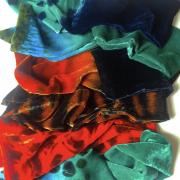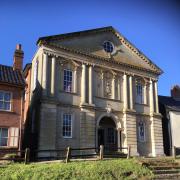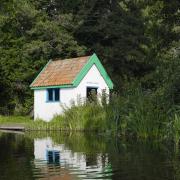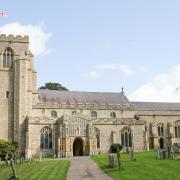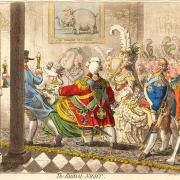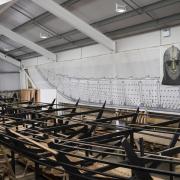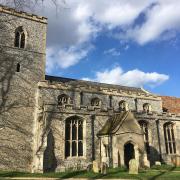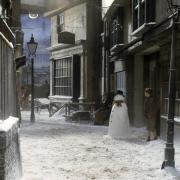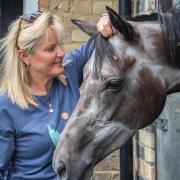Toby Capwell knew from an early age that he wanted to be a knight in shining armour. He actually became an expert in medieval chivalry, donning the armour, learning to joust, awakening us to fascinating history on our doorstep
He was only five years old when his grandmother took him to the museum in New York City. He walked into a brightly lit gallery and there, towering above him, was a figure on horseback, glinting in the sunlight, bedecked in silk and steel. From that day, Toby Capwell knew what he wanted to be... a knight in shining armour.
'Kids usually aren’t that interested in staring at things in glass cases,' he says. 'They want to do things. I wanted to wear armour, get on a horse and fight.' The dream didn't die, so at 11 he learnt to ride and was jousting in full plate armour by the time he was 19. He studied medieval history and English literature at college before leaving America to work for the Royal Armouries in Leeds in the late 1990s, where he joined the museum’s jousting team.

'I started working as a horseman, doing combat demonstrations. It was only once I was in the museum, surrounded by the real artefacts, that I realised I wanted to be a scholar as well as being a practitioner.' Now an international authority on medieval and Renaissance arms and armour, Toby is respected in academia, has written 10 highly regarded books, acts as a consultant for TV and film, is at the forefront of jousting as sporting competition, and shares his love of it all in hugely popular open lectures and talks.
'It’s a child’s fascination that’s gotten completely out of control,' he says of his career. 'But enthusiasm is infectious. At my lectures, people tell me "I didn’t think I’d be interested in arms and armour, but now I am".'
The subject is so rich it leads us into all sorts of new areas we never could have imagined, he says. 'Armour is technology of fighting - utilitarian equipment designed to keep people alive in a very harsh and dangerous environment. But it is also an expressive art form – wearable sculpture that radiates all kinds of fascinating messages, revealing what people thought about themselves, how they wanted to be seen and what they considered beautiful.'

But armour and knights in general have attracted many myths and misconceptions, he says. Armour was not unbearably heavy, as is often thought, warhorses were not huge lumbering monsters and knights did not have to be lifted onto the saddle with cranes. 'Knights are legendary beings now; if you want to understand them, you have to explore the relationship between myths and reality.'
A case in point is Richard III, the 15th century English king who was killed fighting in armour at Bosworth in 1485. The last British monarch in history to die in battle, he is a figure shrouded in legend and mystery. In 2012 when Philippa Langley and a team of archaeologists discovered his burial place in Leicester, Toby contributed to the study of the bones. Later, when the time came to re-inter Richard III, Toby was one of the two armoured horsemen who escorted the coffin from the Bosworth battlefield to its final resting place in Leicester Cathedral.
'When you wear full plate armour, it isn’t some weird, abstract, bizarre performance art thing,' Toby says. 'There are very real, practical and immediate motivations for doing it; it confers real, literal, physical power and that’s why it has endured, why it still has cultural resonance.' We can study armour in a detached academic way, he says. 'But I want to know how it feels to be inside it, how it smells, what noise it makes, what it does to my body and my mind. You can study things with extraordinary intensity if you have focus, if you have a mission.

'Ultimately historical inquiry is about trying to understand those who came before us. For me, armour is a hotline straight back to the minds of people who have been dead for hundreds of years. It gives me a sense of communion and continuity in an age when it is easy to feel disconnected from our past and our ancestors.' Toby urges us to look more closely at the history of our local environment, particularly in Suffolk where he has lived for the past 14 years, moving here when his wife, Emma Roodhouse, took on the post of curator at Ipswich Museum.
'I’m from America, but I’ve lived in Suffolk longer than I’ve lived anywhere,' he says. 'Suffolk is a very rich area historically. It’s full of fabulous medieval and Renaissance culture, packed into quite a small area. You’ve got the castles at Framlingham and Orford, and fabulous medieval churches like those at Dennington, Wingfield and Long Melford. Each one of our parish churches is like a little museum of medieval and Renaissance art.' In particular, the monumental funerary effigies in English churches provide an extraordinary record of armour of the 15th century, the focus of Toby’s academic research for more than 20 years.
'No English armour of that period has survived but, in the churches, you have hundreds of these life-sized, fantastically realistic sculpted images of dead knights,' he says. Toby toured churches all over the country to study effigies during his doctoral research and was able to reconstruct the history of English armour design in the 1400s. But he also learned about English identity and the beliefs of people living in the Middle Ages; about their conception of the afterlife and how they wished to be remembered.

Now Toby sometimes leads visits to churches to look at the effigies and talk about his work. 'For some people, the old effigy in the local church has always been there. I try to say, let’s look at this again, in a different way. Let’s try to understand the world from this person’s point of view. He wasn’t a mythological creature or a legendary hero, he was a real human being, like me and you. We often forget to look again at what’s always been there, right on our doorstep. But we should.'






